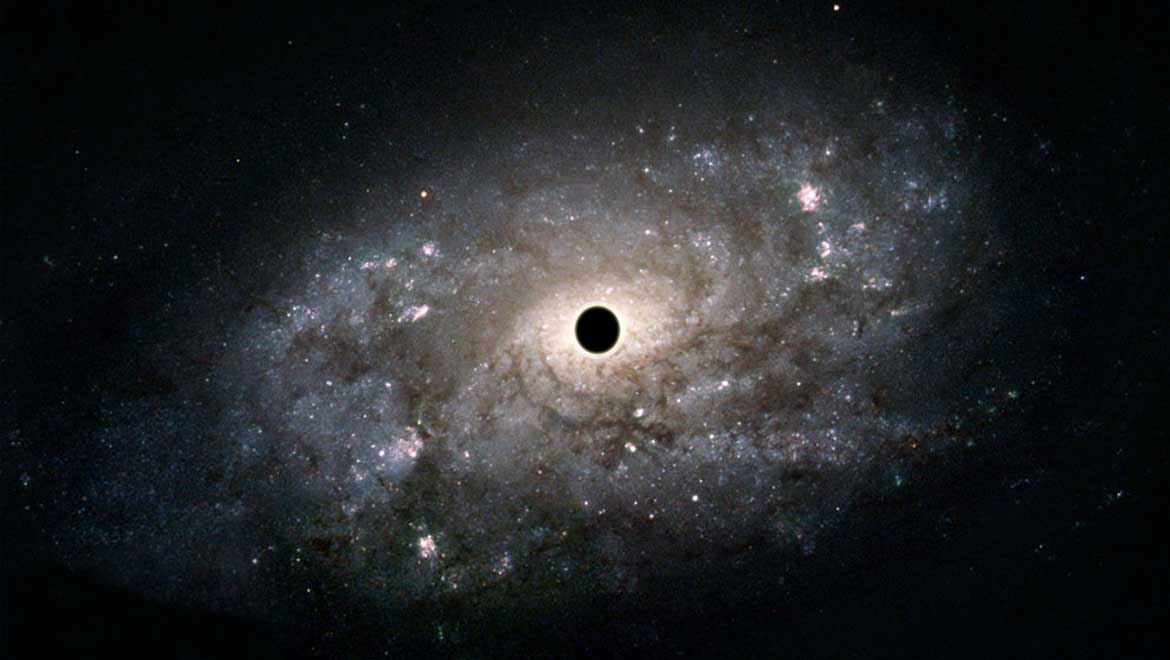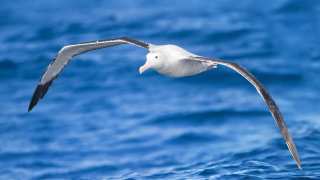Astronomers now agree that at the center of large galaxies, lie supermassive black holes. These black holes usually have a mass greater than a million solar masses. As yet though, the formation of these supermassive black holes has remained somewhat of a mystery. Astronomers have long suggested that perhaps a possible explanation for the sheer magnitude of these black holes is that they may have been formed from a number of smaller, intermediate-mass black holes merging together in order to eventually form a supermassive black hole.
Discovering an intermediate-mass black hole is big news
Whilst many possible candidates for these intermediate-mass black holes have been suggested, none have been definitively accepted. That is, until now. In new research released just this week, a team of astronomers from Keio University in Yokohama, Japan found evidence for one of these intermediate-mass black holes near the center of our galaxy, the Milky Way.
Their paper, titled ‘Millimetre-wave emission from an intermediate-mass black hole in the Milky Way’ was published in the journal Nature Astronomy on September 4.
Using the Atacama Large Millimetre/submillimetre Array (ALMA) in Chile, the team discovered what they called a “peculiar molecular cloud” near the middle of the Milky Way. The astronomers were studying this particular cloud of gas because the gases within it, including carbon monoxide and hydrogen cyanide, seemed to be behaving strangely and moving at very different speeds. What they found was that it appears that the gases are being subjected to huge gravitational forces, which warranted more detailed investigations.

Atacama Large Millimetre/submillimetre Array (CC-BY 4.0)
By analyzing the kinematics of the cloud of gas, they discovered that a “compact object” with a mass 100,000 times greater than our own sun, was hidden in the middle of the cloud of gas. In other words, the astronomers had discovered an elusive intermediate-mass black hole. Their initial suspicions were backed up by observations of radio waves coming from the gas cloud which also suggest that there is a black hole within the cloud.
If confirmed, the newly discovered intermediate-mass black hole, named CO-0.40-0.22, will rank as the second largest black hole so far discovered in the Milky Way, second only to Sagittarius A* in the center of the galaxy. Sagittarius A* is significantly bigger though, with a mass of more than four million suns.
Finding out more about how supermassive black holes form
Tomoharu Oka, lead author of the study said: “This is the first detection of an intermediate-mass black hole candidate in the Milky Way galaxy.” This discovery is so important because it helps to give weight to the theory discussed at the start of this article, that supermassive black holes are formed when lots of smaller black holes, which form when certain types of stars die, come together. So far, 60 smaller black holes have so far been identified within the Milky Way. Despite the relatively low number of these small black holes which have been positively identified, astronomers estimate that there is probably around another 100 million waiting to be discovered.
It’s not until now that astronomers have positively identified the ‘missing link’ between the smaller black holes and supermassive black holes. Now that a black hole with a mass in between that of the smaller black holes and the supermassive black holes has been discovered, it lends real weight to this theory of how these supermassive black holes might form.
It’s expected that eventually, the newly discovered black hole with be drawn towards and accumulated into Sagittarius A*, making it even bigger than it currently is.
Top image: The Milky Way, black hole inserted to image. Image Credit: NASA/ESA/Hubble Heritage Team







No comment